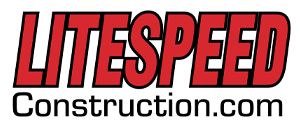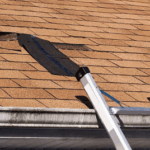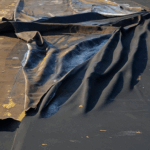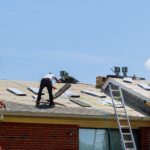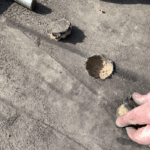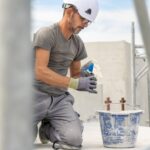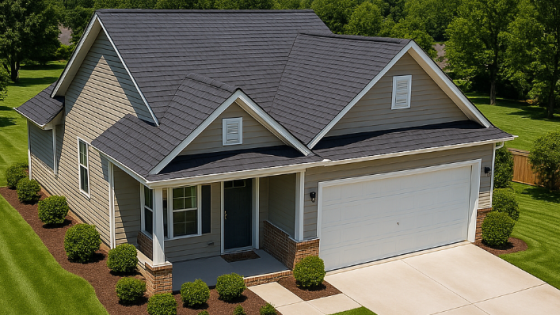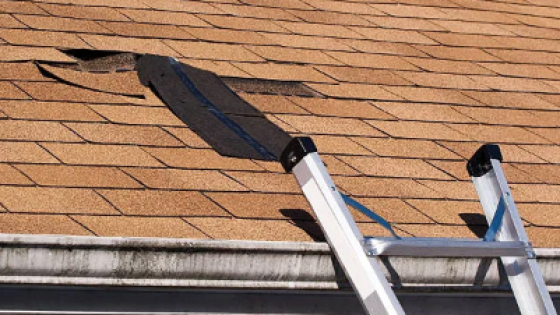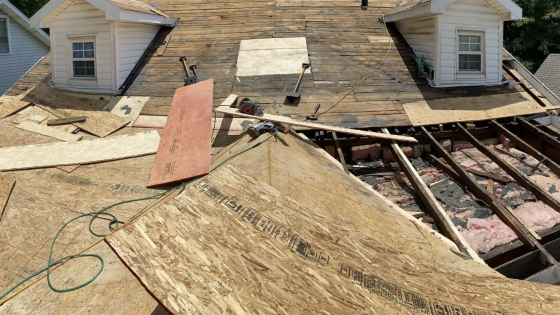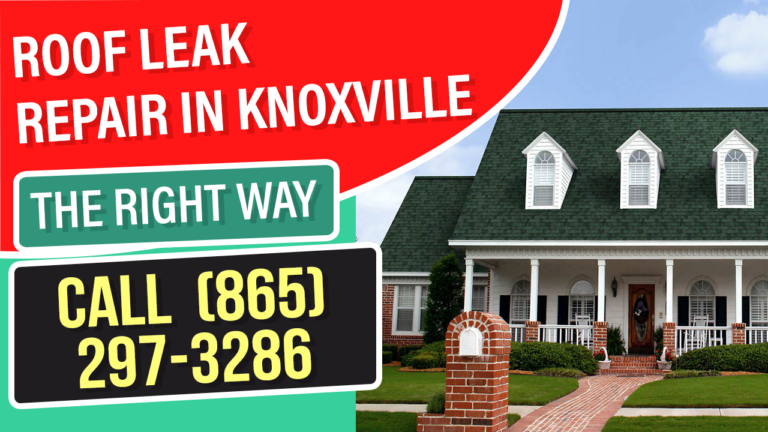When it comes to protecting your home, roof damage is one of the most critical issues to address, especially after storms or other natural events. Knoxville homeowners know the importance of maintaining their roofs in good condition, and when damage occurs, working with your insurance company is an inevitable step in the process.
An insurance adjuster inspection is a key part of filing a roofing claim. Preparing effectively for this inspection can save time, ensure fair compensation, and avoid unnecessary delays. Below are the top three things to focus on when preparing for an insurance adjuster inspection in Knoxville, TN. Following these steps will help you navigate the insurance process smoothly.

Step 1: Alert Your Insurance and Clearly State Your Intent
The first step after detecting roof damage is notifying your insurance company promptly. After a major storm or event, many people may be filing claims, so it’s essential to get ahead of the queue.
What to do:
– Notify Your Insurance Provider Early: Don’t wait too long after discovering damage. Once you suspect or confirm damage to your roof, contact your insurance provider immediately to begin the claims process.
– Clearly State Your Intent to File a Claim: When speaking to your insurance company, make your intentions clear. Let them know that you intend to file a claim and need an adjuster inspection. This formalizes the process and sets it in motion.
– Mention Your Payment History: If you’ve been paying your premiums for years, this is a good time to bring it up. It can show your long-term commitment to the policy, helping to strengthen your case in the eyes of the insurer.
The faster you alert your insurance provider and clearly express your intent, the sooner the adjuster inspection can take place.
Step 2: Understand Your Policy and Be Prepared to Ask Questions
Before the adjuster arrives, one of the most crucial preparations is understanding your homeowner’s insurance policy. Knowing what your policy covers and excludes will help you better navigate the claims process and advocate for your best interests.
What to do:
– Review Your Insurance Policy: Take the time to thoroughly read your policy and understand what it covers. Are wind or hail damages covered? Are there specific exclusions for certain types of damage? Knowing this will allow you to discuss confidently with the adjuster.
– Prepare Questions for Your Adjuster: Make a list of questions before the inspection, such as whether roof repairs or replacements are covered, what the deductible is, and how the claim process will proceed.
– Be Ready to Ask Your Mortgage Company Questions: If you have a mortgage, your mortgage company may be involved in the claim process, especially if the check is made out to both you and the lender. Be sure to clarify the mortgage company’s requirements for releasing funds and how to endorse the check to avoid delays in repairs.
Step 3: Assess the Adjuster's Confidence Level and Be Ready to Request a Re-inspection
It’s crucial to gauge how confident the adjuster feels about their findings. Sometimes, the adjuster’s conclusions might not align with the actual scope of the damage, especially if it’s severe or complex.
What to do:
– Ask the Adjuster for Their Confidence Level: During the inspection, ask the adjuster how confident they feel in their assessment. If they seem unsure or unable to answer your questions thoroughly, it might indicate that a re-inspection is needed or that a public adjuster could be helpful.
– Consider Hiring a Public Adjuster: If you feel that the insurance adjuster’s findings don’t match the actual damage or if the settlement amount is lower than expected, you may want to hire a public adjuster. Public adjusters work on your behalf and can negotiate with the insurance company to ensure you get the appropriate compensation.
– Be Prepared to Call for a Re-inspection: If you disagree with the adjuster’s conclusions, you can request a re-inspection. This step is especially important if there’s visible damage that was overlooked or underestimated in the initial assessment.
By being proactive, asking the right questions, and considering additional steps like hiring a public adjuster, you can ensure your claim is fairly evaluated.
Pros and Cons of Hiring a Public Adjuster
| Pros | Cons |
|---|---|
| They work on your behalf to get maximum compensation. | They typically charge a percentage of the settlement. |
| More experienced in negotiating with insurance companies. | Can slow down the process if there are disputes. |
| Can help in complex cases where damage is extensive or overlooked. | Not always necessary for straightforward claims. |
FAQs About Preparing for an Insurance Adjuster Inspection
You should contact your insurance provider as soon as possible, ideally within 24-48 hours of detecting the damage.
Yes, it's advisable to be present to point out damage and ensure the adjuster has all the relevant information.
Absolutely. It’s your right to ask for a copy of the report after the inspection.
You can request a re-inspection or hire a public adjuster to review the case.
Typically, it takes about 30 minutes to a few hours, depending on the extent of the damage.
Yes, but only if they are emergency repairs to prevent further damage. Document everything with photos.
Clarify their requirements for releasing insurance claim funds for repairs.
Yes, in most cases, you have the right to choose any licensed contractor for repairs.
A public adjuster works on your behalf to negotiate with the insurance company. Consider hiring one if you disagree with the insurance adjuster’s evaluation.
Have your policy, documentation, and contractor estimates ready before the adjuster arrives, and stay proactive in communication with your insurance company.
Final Thoughts on Insurance Adjuster Inspections
Preparing for an insurance adjuster inspection in Knoxville, TN, doesn’t have to be overwhelming. By following these steps—alerting your insurance, understanding your policy, and preparing questions—you’ll be well on your way to making a successful roofing insurance claim getting the roof repairs you need. Don’t forget that you can always request a re-inspection or hire a public adjuster if you’re unsatisfied with the process.
